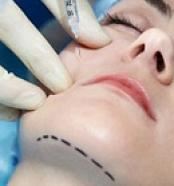 Cleft Lip
Cleft Lip- Cleft Palate
- Syndactyly (Webbed Fingers)
- Polydactyly (Extra Finger)
- Scar Treatment
- Burn and Post-Burn Treatments
- Tattoo Removal
- Removal of Skin Moles
Moles are formed when the pigment melanin, which gives the skin its color, accumulates in one spot. Moles can be congenital or acquired later in life. Acquired moles are often linked to genetic factors as well as exposure to ultraviolet rays from the sun.
Not all moles are dangerous. You can usually identify whether a mole is risky through careful observation. Extra attention should be paid to moles located in areas prone to constant irritation, such as those under belts or bras, on the soles of the feet, the palms of the hands, or in the genital region.
Moles are surgically removed if they are irritated, show changes, or carry a risk of turning into skin cancer. Another common reason for mole removal is aesthetic purposes, as many people who want smooth, spotless skin prefer to have them removed.
There is a common belief that removing moles causes cancer; however, removing a mole completely from the body poses no harm. The danger lies in situations where a mole is cut, torn, or accidentally detached while still on the body. Removal is performed under local anesthesia, completely pain-free, ensuring both the mole and its root are excised. The incision is then closed with cosmetic sutures by the surgeon. If necessary, the removed tissue may be sent for pathological examination. It is a quick and simple surgical procedure under local anesthesia, taking only a few minutes. For the patient, excisional biopsy is a very straightforward procedure. Once a fine needle injects the anesthetic beneath the skin, the mole is painlessly and comfortably removed and sutured within minutes.
- Removal of Sebaceous Cysts